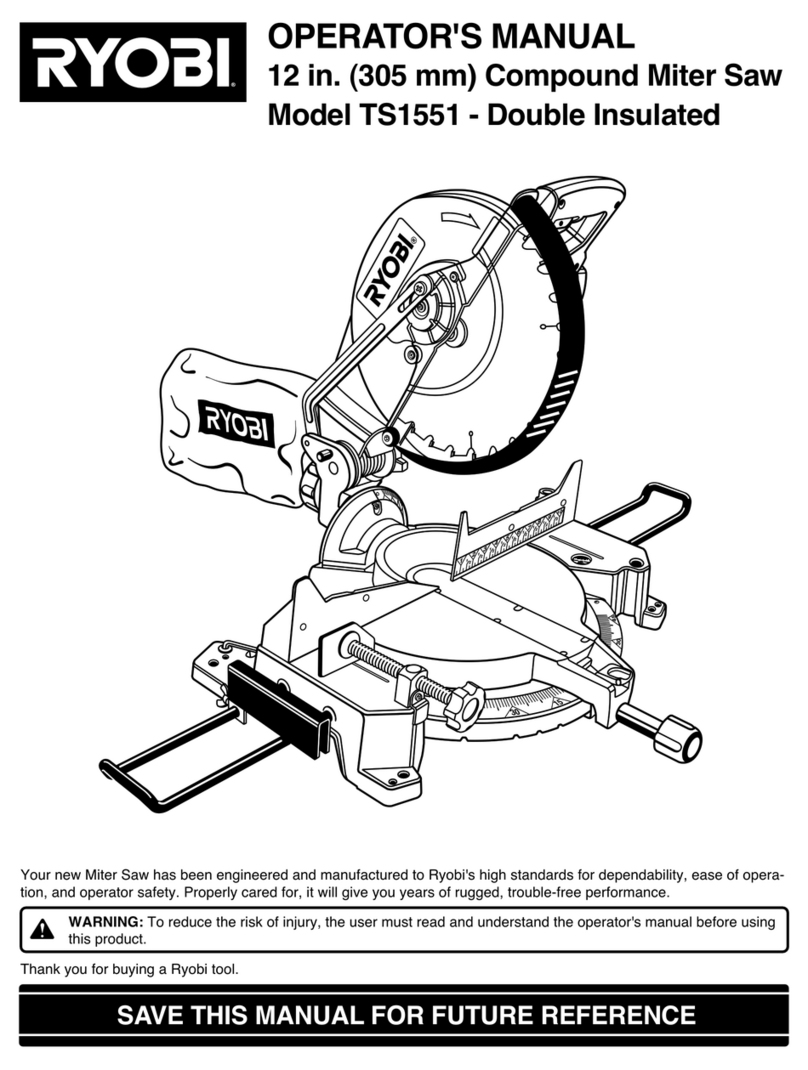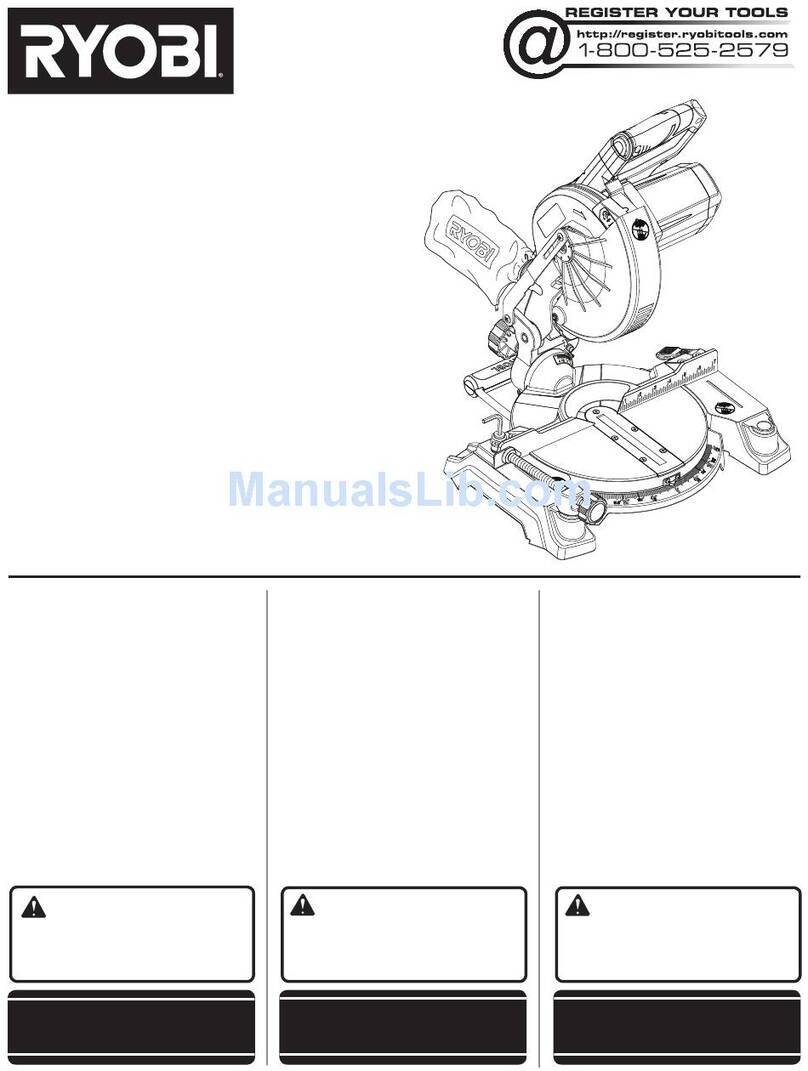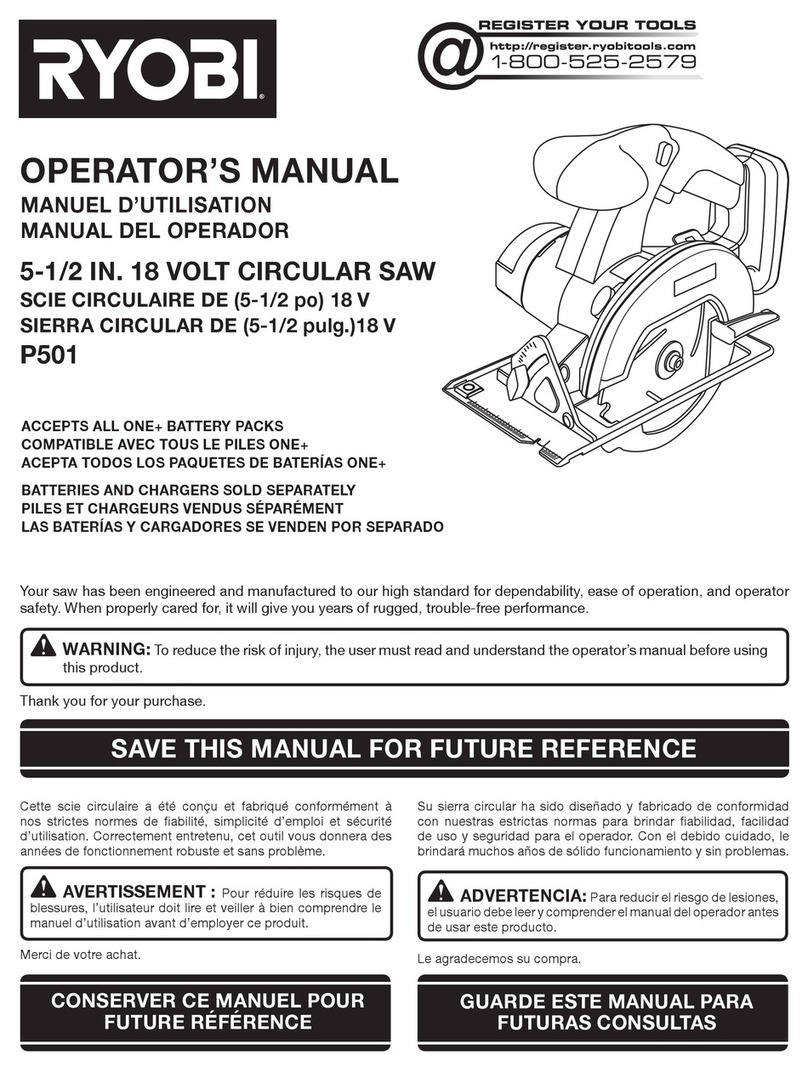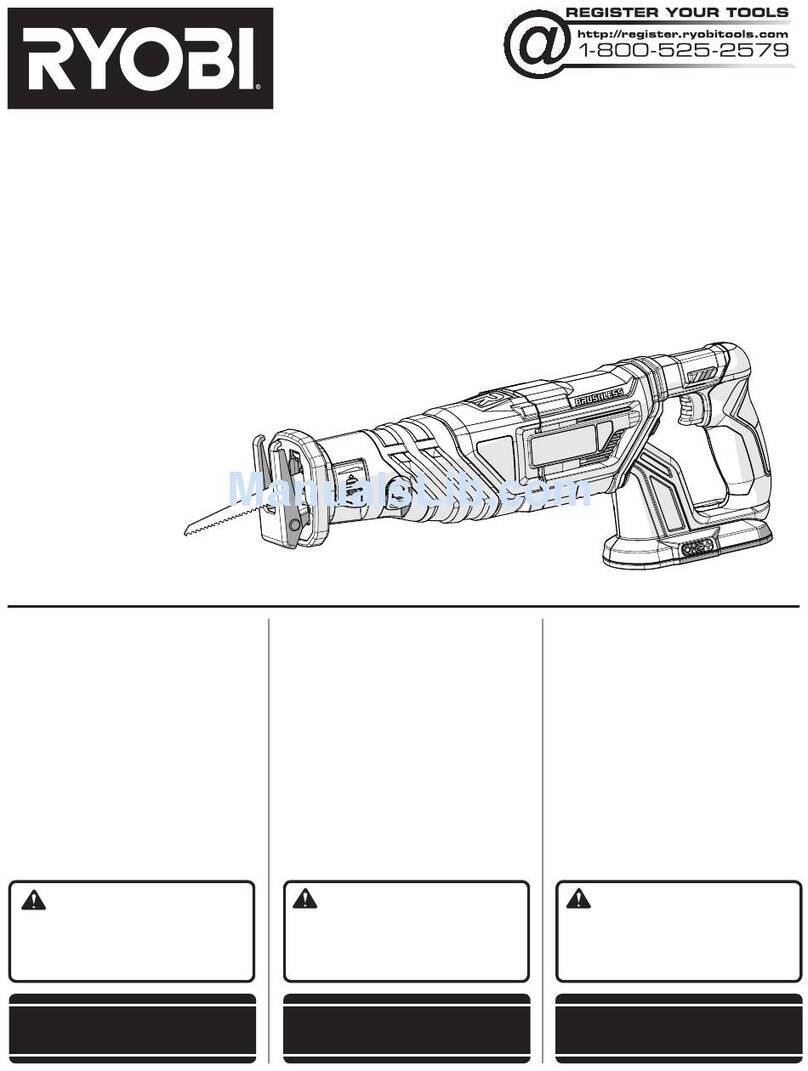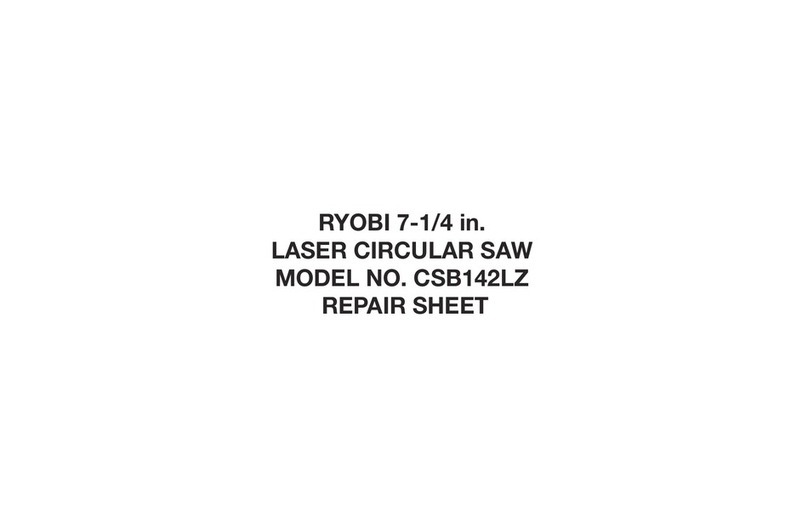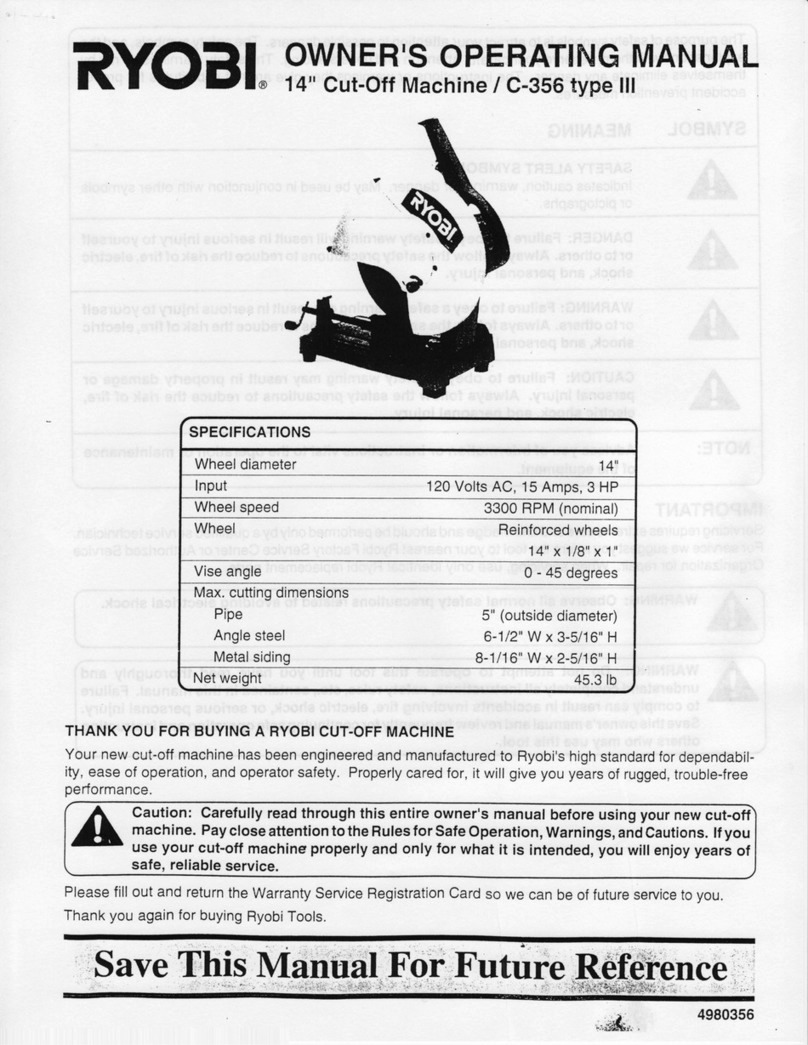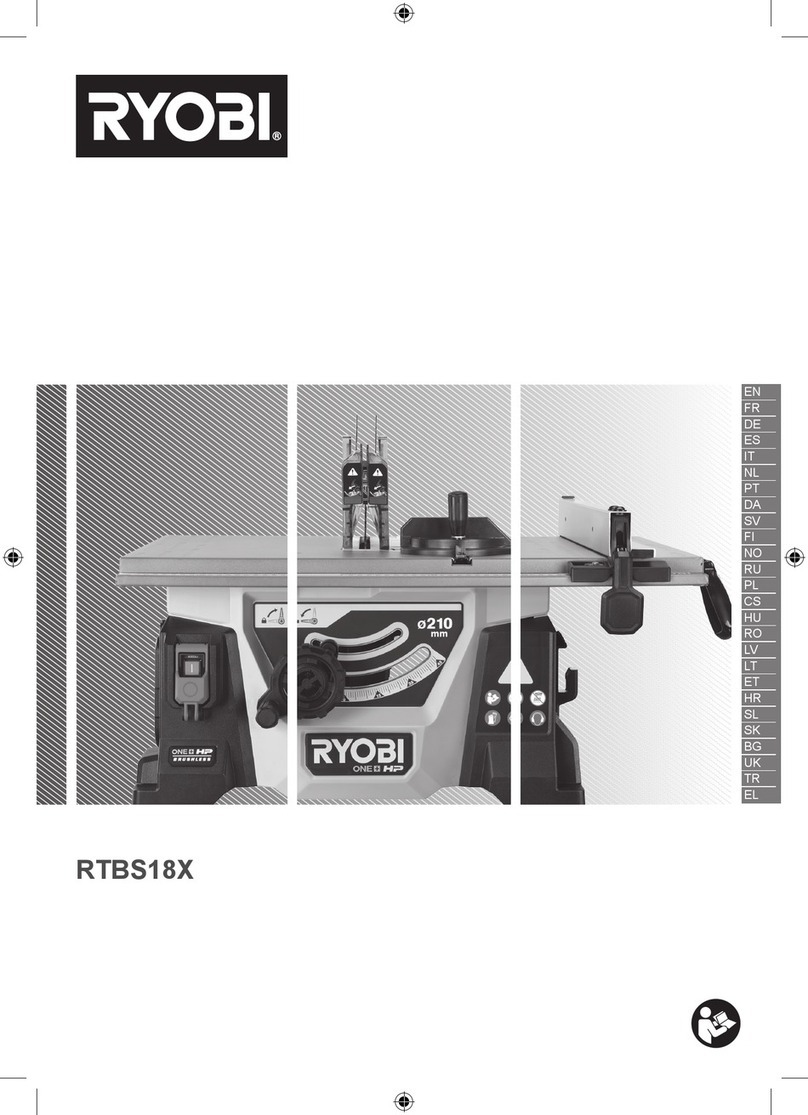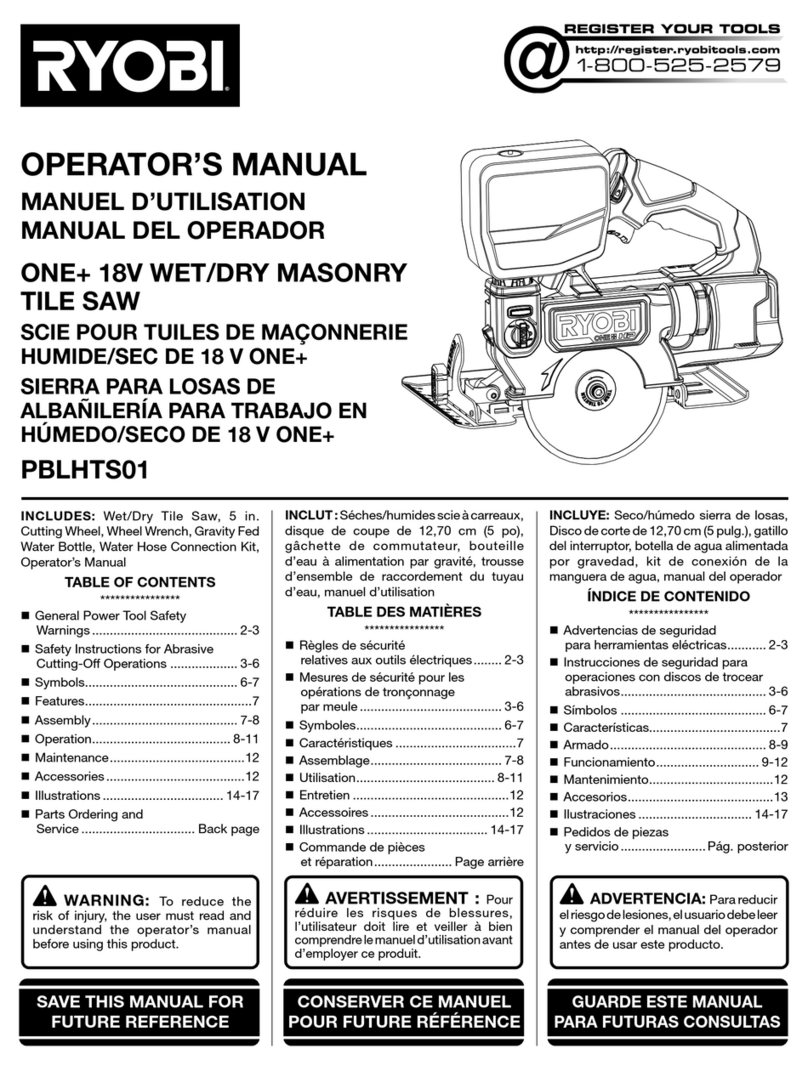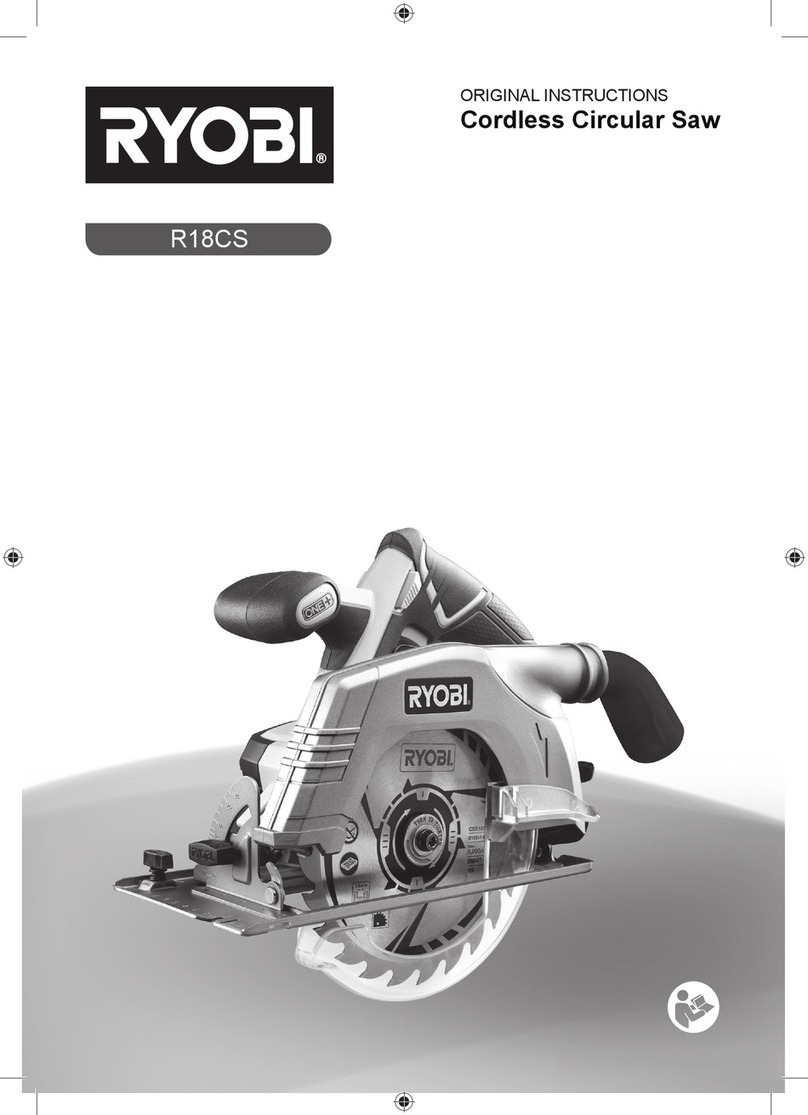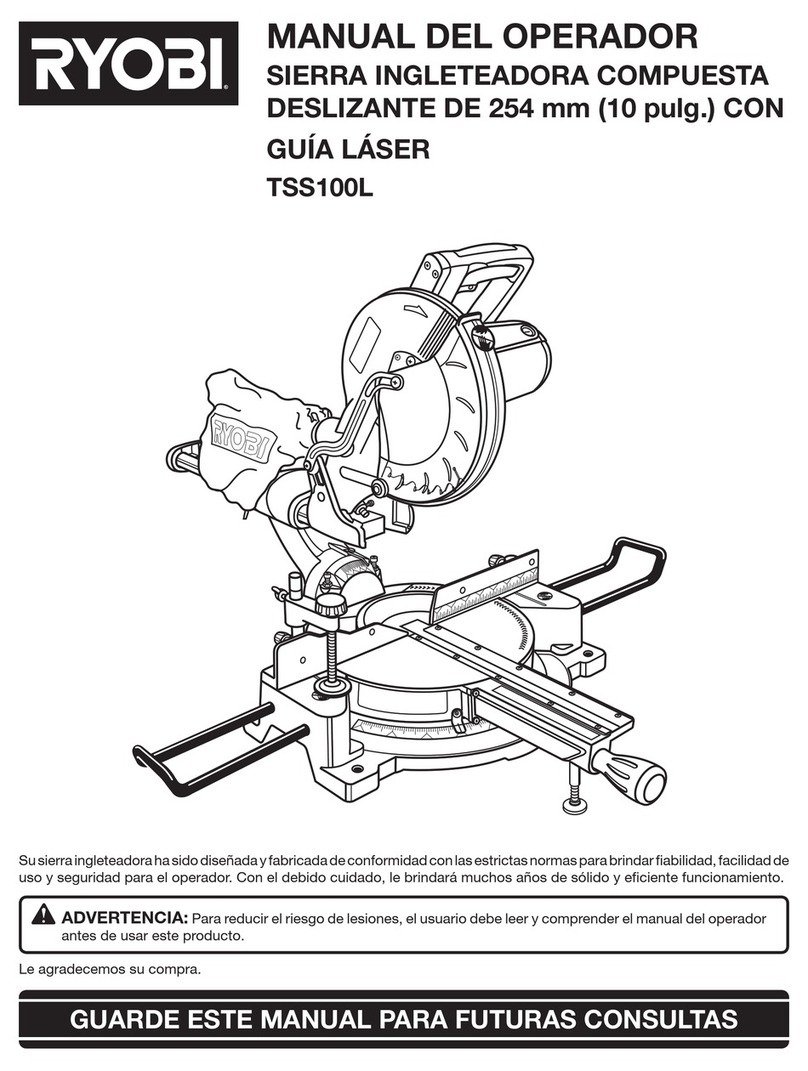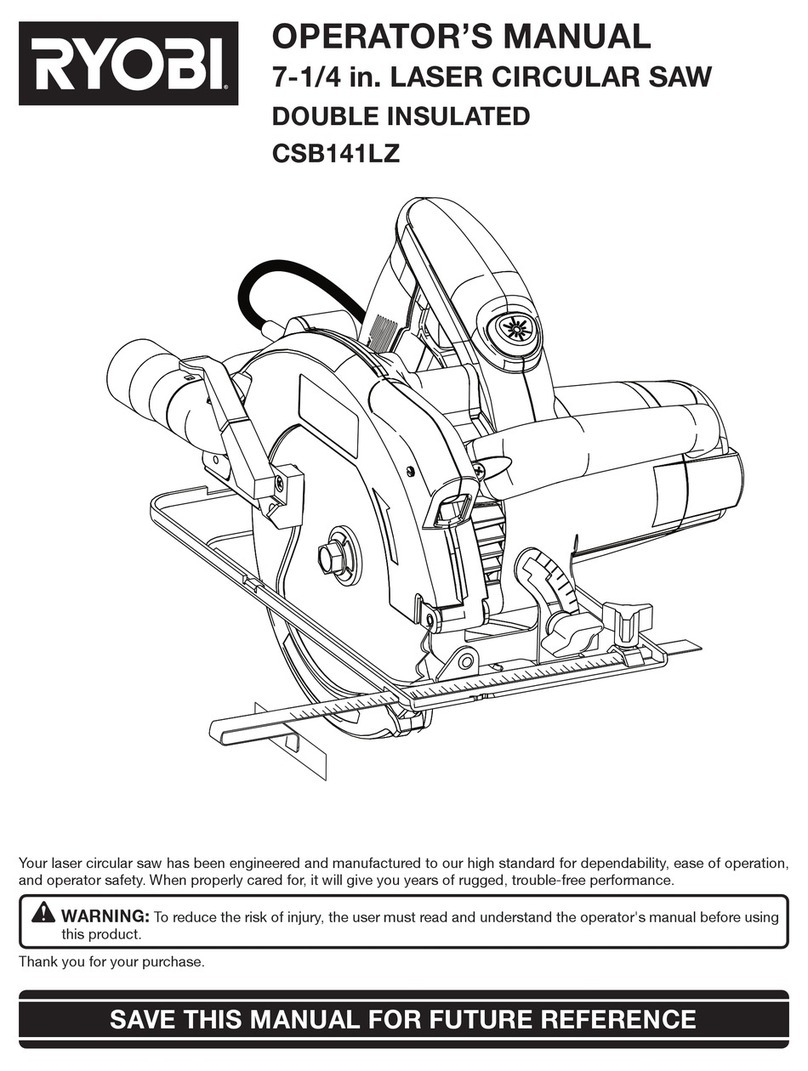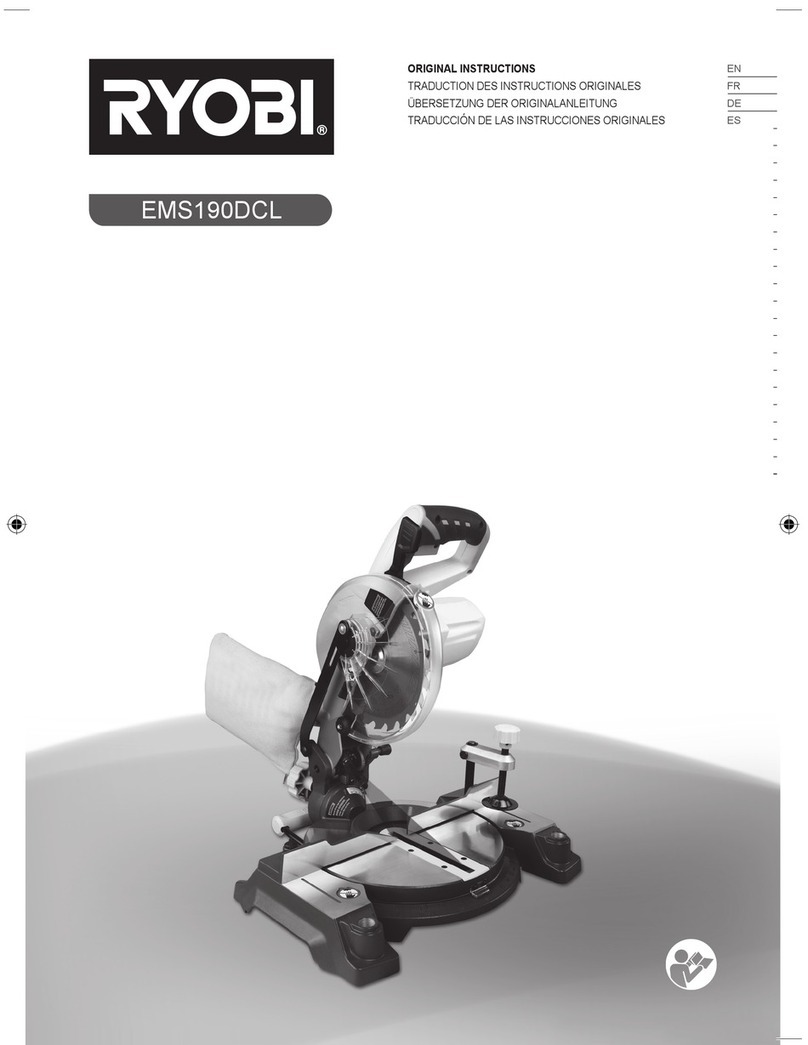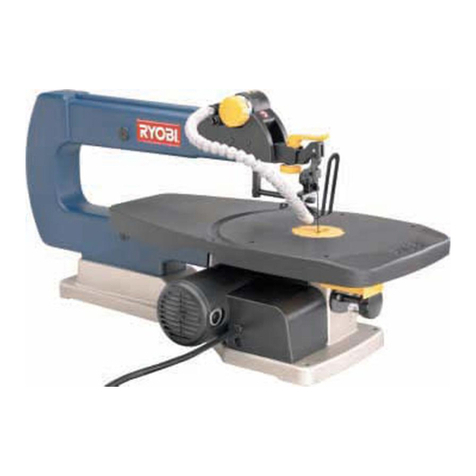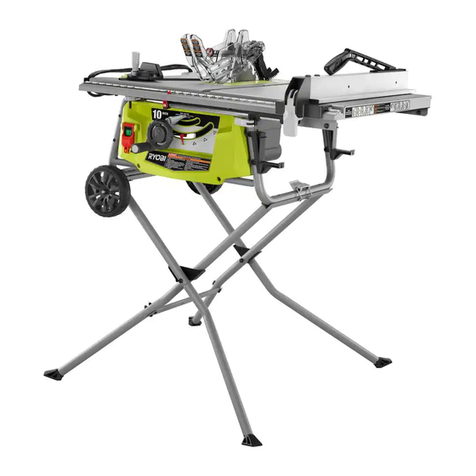
■Inspect the saw blade before use. Do not use saw
blades which may have been dropped or which are
chipped, cracked or otherwise defective.
WORKPLACE HAZARDS
■Slips, trips and falls are major causes of workplace
injury. Be aware of slippery surfaces caused by use of
the tool and also of trip hazards caused by the air line
or hydraulic hose.
■Proceed with care in unfamiliar surroundings. There
can be hidden hazards, such as electricity or other
utility lines.
■The reciprocating saw is not intended for use in
potentially explosive atmospheres and is not insulated
against coming into contact with electric power.
■Ensure that there are no electrical cables, gas pipes,
etc., which can cause a hazard if damaged by use of
the tool.
DUST AND FUME HAZARDS
■Dusts and fumes generated when using reciprocating
saws can cause ill health (for example cancer, birth
defects, asthma and/or dermatitis); risk assessment
and implementation of appropriate controls for these
hazards are essential.
■Risk assessment should include dust created by the
use of the tool and the potential for disturbing existing
dust.
■Operate and maintain the reciprocating saw as
recommended in the instruction handbook, in order to
minimize dust or fume emissions.
■Direct the exhaust so as to minimize disturbance of
dust in a dust-filled environment.
■Where dusts or fumes are created, the priority shall be
to control them at the point of emission.
■All integral features or accessories for the collection,
extraction or suppression of airborne dust or fumes
should be correctly used and maintained in accordance
with the manufacturer’s instructions.
■Select, maintain and replace the consumable/inserted
tool as recommended in the instruction handbook to
prevent an unnecessary increase in dust or fumes.
■Warnings shall be given against the risk of explosion
or fire due to the material being processed.
■Use respiratory protection in accordance with
the employer’s instructions and as required by
occupational health and safety regulations.
■Working in certain materials creates emission
of dust and fumes, causing potentially explosive
environments.
NOISE HAZARDS
■Exposure to high noise levels can cause permanent,
disabling hearing loss and other problems, such
as tinnitus (ringing, buzzing, whistling or humming
in the ears). Therefore, a risk assessment and
implementation of appropriate controls for these
hazards are essential.
■Appropriate controls to reduce the risk may include
actions, such as damping materials to prevent
workpieces from “ringing”.
■Use hearing protection in accordance with the
employer’s instructions and as required by
occupational health and safety regulations.
■Operate and maintain the reciprocating saw as
recommended in the instruction handbook, to prevent
an unnecessary increase in noise levels.
■Select, maintain and replace the consumable/inserted
tool as recommended in the instruction handbook, to
prevent an unnecessary increase in noise.
■If the reciprocating saw has a silencer, always ensure
it is in place and in good working order whenever the
tool is being operated.
VIBRATION HAZARDS
The information for use shall draw attention to vibration
hazards that have not been eliminated by design and
construction and remain as residual vibration risk. It shall
enable employers to identify the circumstances in which
the operator is likely to be at risk from vibration exposure.
If the vibration-emission value obtained using ISO 20643
or ISO 28927-8, as specied in 5.3, does not adequately
represent the vibration emission in the intended uses
(and foreseeable misuses) of the machine, additional
information and/or warnings shall be supplied to enable
the risks arising from vibration to be assessed and
managed.
■Exposure to vibration can cause disabling damage to
the nerves and blood supply of the hands and arms.
■Wear warm clothing when working in cold conditions
and keep your hands warm and dry.
■If you experience numbness, tingling, pain or
whitening of the skin in your fingers or hands, stop
using the circular, oscillating or reciprocating saw, tell
your employer and consult a physician.
■Operate and maintain the circular, oscillating or
reciprocating saw as recommended in the instruction
handbook to prevent an unnecessary increase in
vibration levels.
■Select, maintain and replace the consumable/inserted
tool as recommended in the instruction handbook, to
prevent an unnecessary increase in vibration levels.
■Support the weight of the tool in a stand, tensioner or
balancer, if possible.
■Hold the tool with a light, but safe, grip taking account
of the required hand-reaction forces, because the risk
from vibration is generally greater when the grip force
is higher.
■Improper mounting of the saw blade can cause
excessive vibration levels.
2

